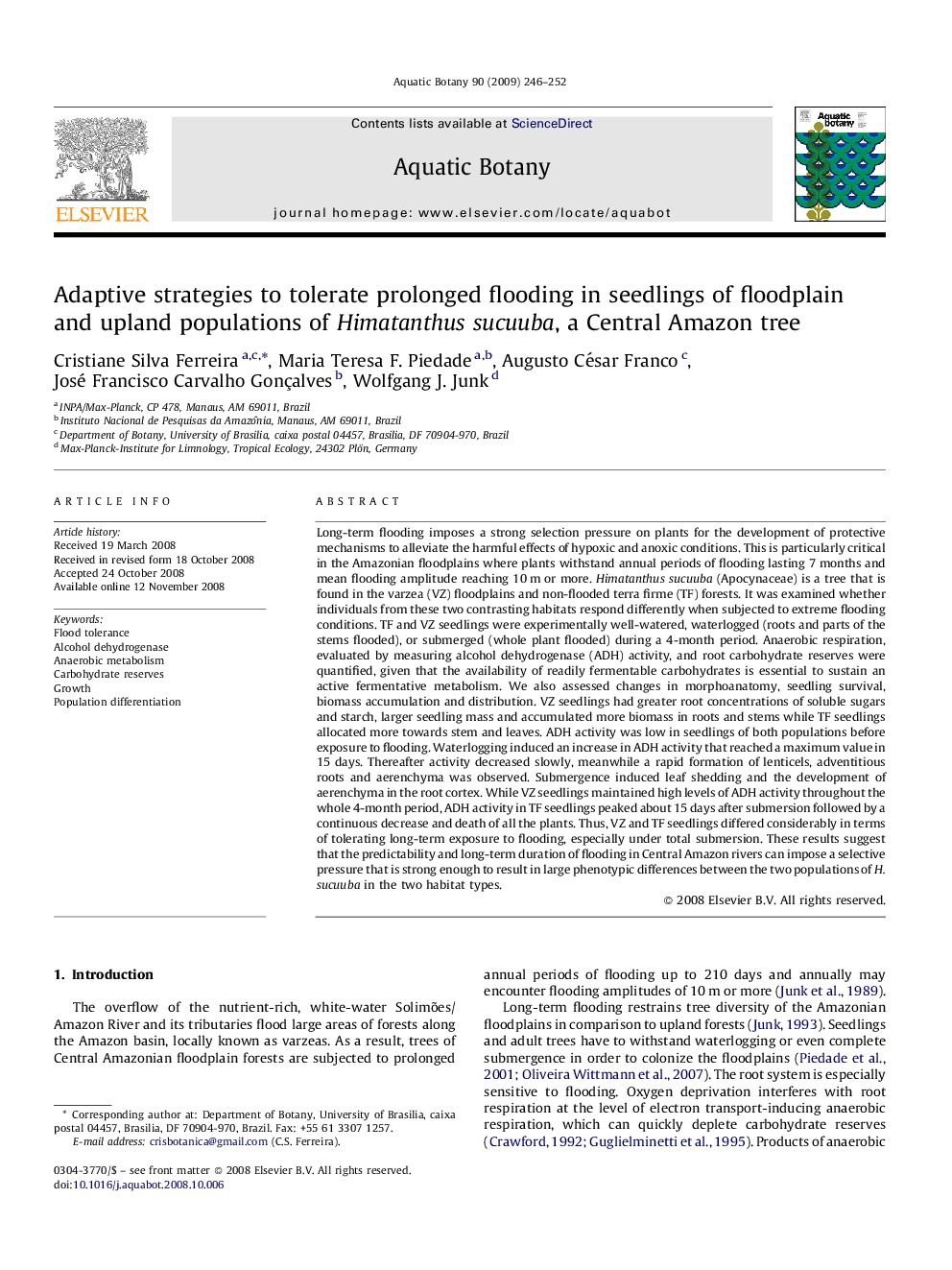| کد مقاله | کد نشریه | سال انتشار | مقاله انگلیسی | نسخه تمام متن |
|---|---|---|---|---|
| 4528434 | 1324307 | 2009 | 7 صفحه PDF | دانلود رایگان |

Long-term flooding imposes a strong selection pressure on plants for the development of protective mechanisms to alleviate the harmful effects of hypoxic and anoxic conditions. This is particularly critical in the Amazonian floodplains where plants withstand annual periods of flooding lasting 7 months and mean flooding amplitude reaching 10 m or more. Himatanthus sucuuba (Apocynaceae) is a tree that is found in the varzea (VZ) floodplains and non-flooded terra firme (TF) forests. It was examined whether individuals from these two contrasting habitats respond differently when subjected to extreme flooding conditions. TF and VZ seedlings were experimentally well-watered, waterlogged (roots and parts of the stems flooded), or submerged (whole plant flooded) during a 4-month period. Anaerobic respiration, evaluated by measuring alcohol dehydrogenase (ADH) activity, and root carbohydrate reserves were quantified, given that the availability of readily fermentable carbohydrates is essential to sustain an active fermentative metabolism. We also assessed changes in morphoanatomy, seedling survival, biomass accumulation and distribution. VZ seedlings had greater root concentrations of soluble sugars and starch, larger seedling mass and accumulated more biomass in roots and stems while TF seedlings allocated more towards stem and leaves. ADH activity was low in seedlings of both populations before exposure to flooding. Waterlogging induced an increase in ADH activity that reached a maximum value in 15 days. Thereafter activity decreased slowly, meanwhile a rapid formation of lenticels, adventitious roots and aerenchyma was observed. Submergence induced leaf shedding and the development of aerenchyma in the root cortex. While VZ seedlings maintained high levels of ADH activity throughout the whole 4-month period, ADH activity in TF seedlings peaked about 15 days after submersion followed by a continuous decrease and death of all the plants. Thus, VZ and TF seedlings differed considerably in terms of tolerating long-term exposure to flooding, especially under total submersion. These results suggest that the predictability and long-term duration of flooding in Central Amazon rivers can impose a selective pressure that is strong enough to result in large phenotypic differences between the two populations of H. sucuuba in the two habitat types.
Journal: Aquatic Botany - Volume 90, Issue 3, April 2009, Pages 246–252